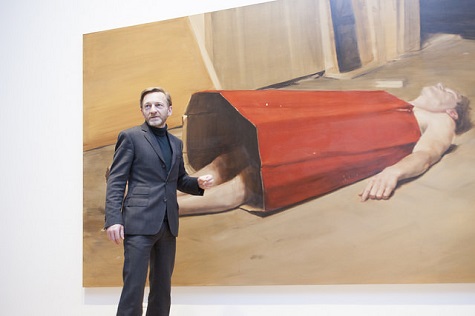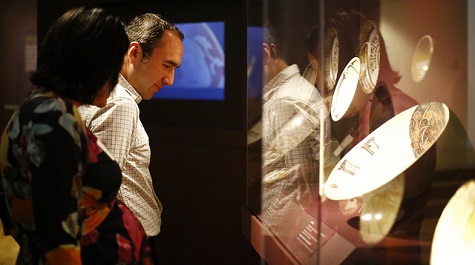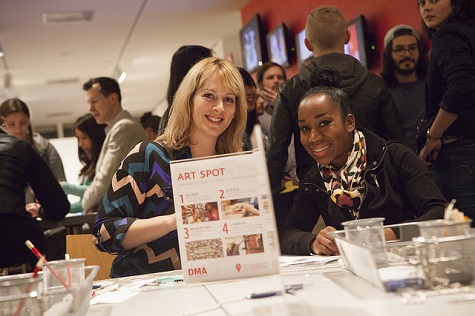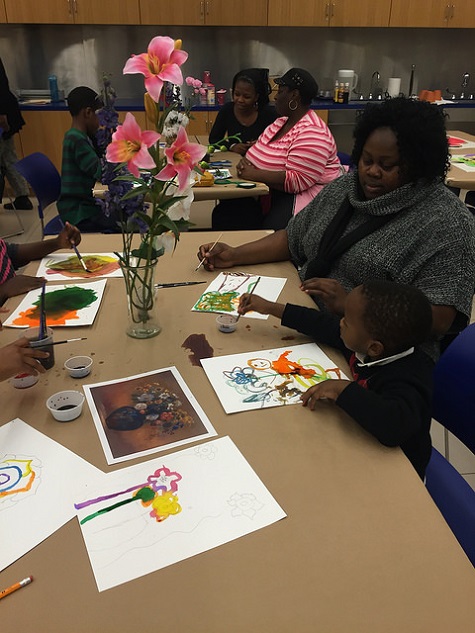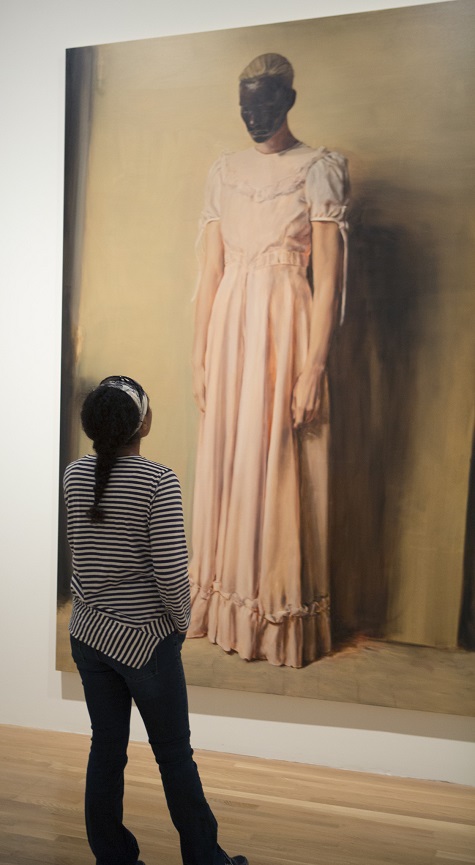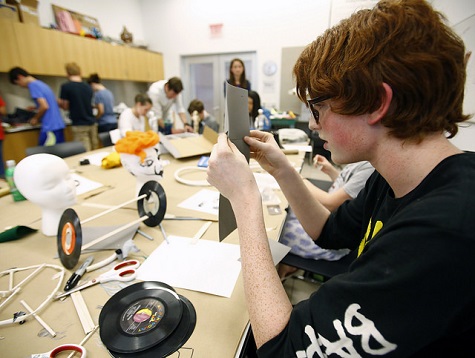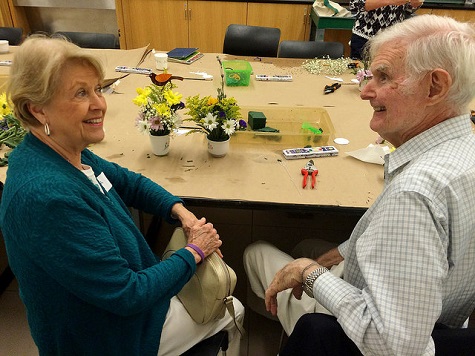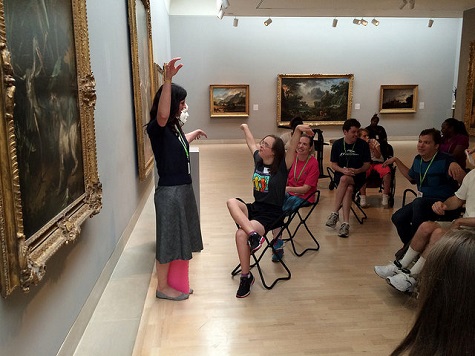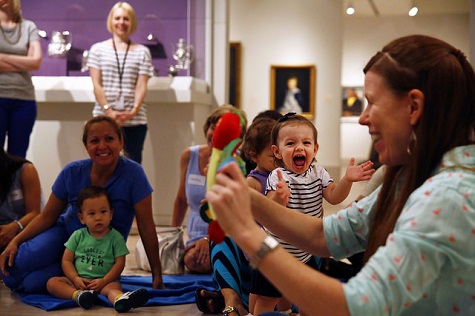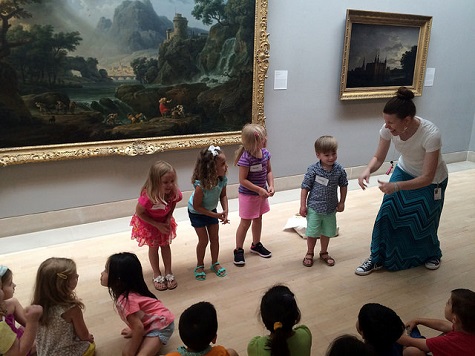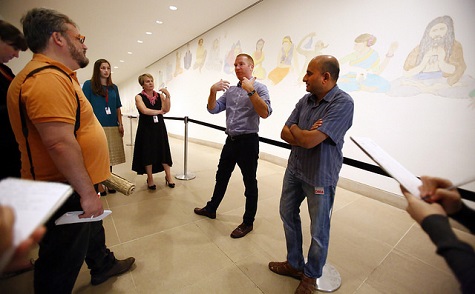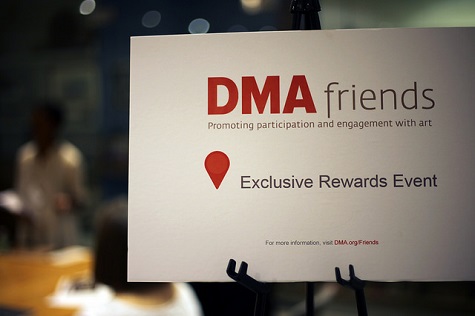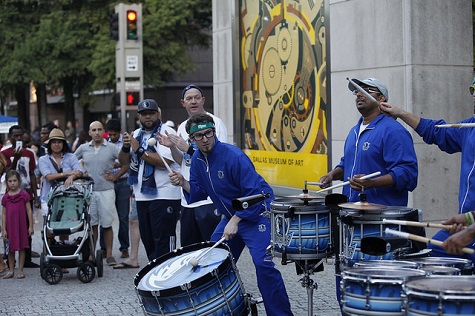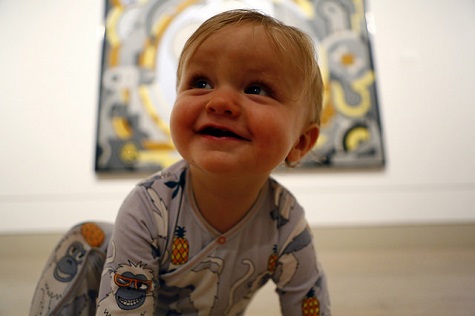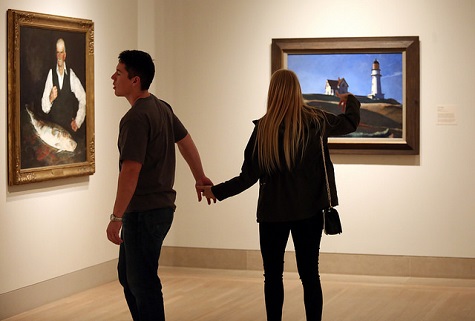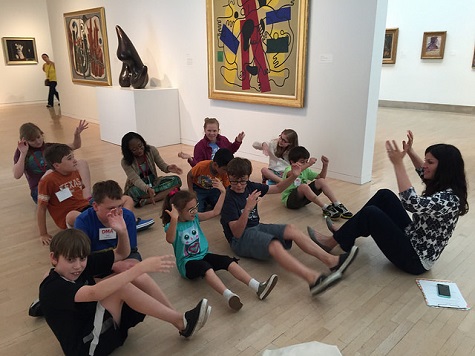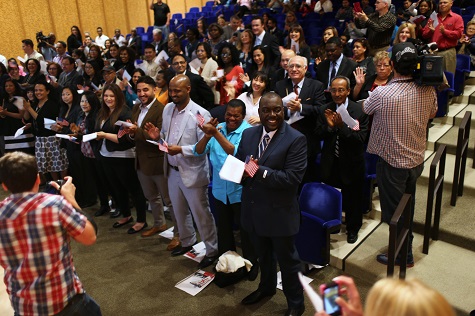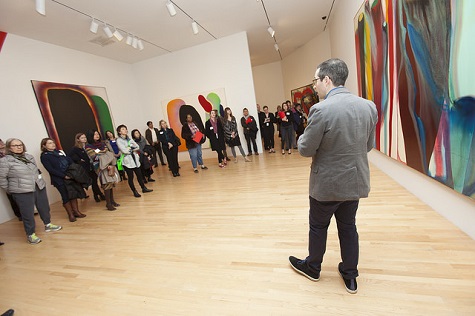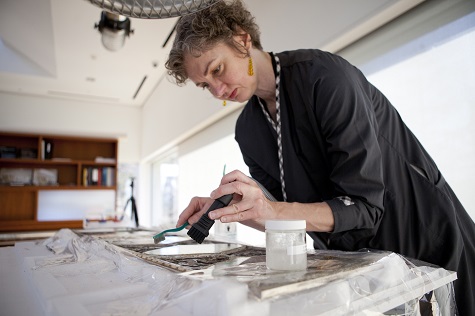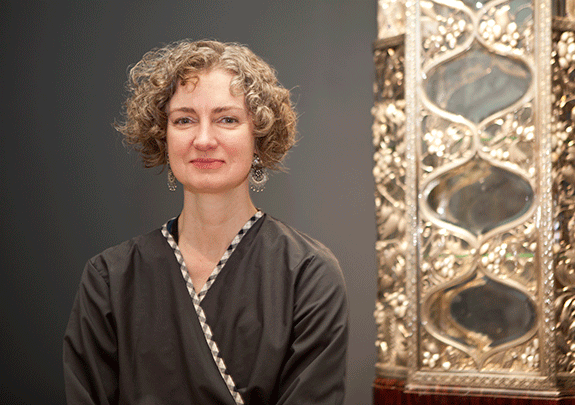Here at the Dallas Museum of Art, the month of July has turned into a celebration of art conservation. On July 1, Mark Leonard began his tenure at the DMA as Chief Conservator. Mark began his career as a restorer at the Metropolitan Museum of Art before heading west to the J. Paul Getty Museum, where he worked for twenty-six years. This Saturday, in conjunction with an Arts & Letters Live event, Mark will meet visitors in the galleries and discuss upcoming restoration work for Jean Baptiste Marie Pierre’s The Abduction of Europa. At 7:30 p.m., author Daniel Silva will be in conversation with Maxwell L. Anderson, The Eugene McDermott Director of the DMA, discussing his new book, The Fallen Angel. Silva is a celebrated “spy fiction ace,” and is known for his hero, Gabriel Allon. Gabriel has a longtime, on-again off-again relationship with Israel’s secret intelligence service, but he also happens to be one of the world’s finest restorers of old master paintings.
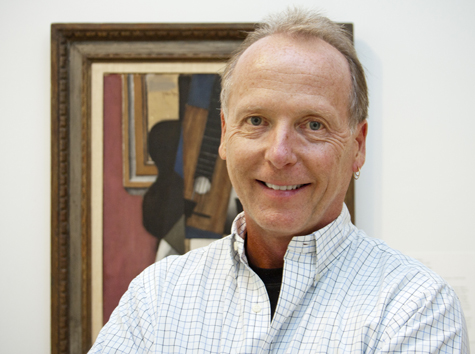
Mark Leonard, Chief Conservator at the Dallas Museum of Art
The Dallas Morning News has said that “in Gabriel Allon, Silva has created a credible secret agent with skills that would make James Bond weep.” Our very own Chief Conservator, Mark Leonard, also has a unique perspective that sets him apart from others in his field: He is an artist as well as a conservator.

Mark, as an artist, do you think you approach your work differently than your contemporaries? How has your work as a conservator affected your work as an artist?
Every artist approaches his work differently. By working with great works of art, from the old masters to contemporary artists, I’ve been able to learn from their work. Not every artist gets this opportunity!
Gabriel Allon is an art restorer by day and a spy and assassin by night. Mark, tell us about your night job as a painter.
For a while in my career, working with a brush in my hand every day, conserving someone else’s work was enough for me. About four or five years ago, I became aware that while I loved restoring paintings, it was really a blank panel that I wanted on my easel. In a series of geometric abstractions, I wanted to explore the theme of love and loss. If you have ever loved, you have experienced loss–the two are interwoven. That’s how I began working on this particular motif. In December of this year, an exhibition of my work inspired by John Constable’s “Cloud Studies” will be on display–side-by-side with the Constables–at the Yale Center for British Art.
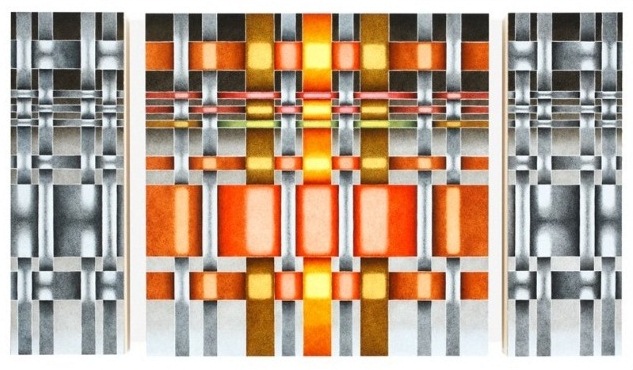
Mark Leonard, “Triptych III,” March 2011, gouache and synthetic resin on panel, Private Collection, Austin, Texas
In Silva’s new novel, Gabriel Allon is sent to the Vatican to restore a Caravaggio masterpiece. Mark, in all of your experiences, can you tell us about a particularly challenging project you’ve worked on?
[He chuckles.] That would have to be a Caravaggio I worked on at the Met. “The Musicians” was heavily damaged. It took about six to eight months to bring it back to life. Restoring a painting could take as little as an afternoon to as long as several years.
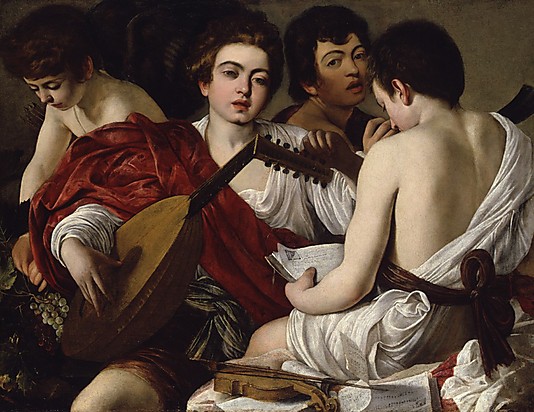
Caravaggio (Michelangelo Merisi), “The Musicians,” c. 1595, oil on canvas, The Metropolitan Museum of Art, Rogers Fund, 1952, 52.81, Image courtesy metmuseum.org
What are some of your upcoming plans for the DMA’s collection? Is there any spy work in your near future?
The Museum is very excited about its plans to build a new paintings conservation studio. We are carefully planning for it to include a public space; we want to be able to share the work that we are doing with our visitors. In the meantime, I am planning on spending the next year really getting to know our collection. [He laughs.] I don’t think there is any spy work in my future here. He’ll leave that to Gabriel Allon.
For more information on Saturday’s event with Daniel Silva, please visit our website. For tickets and to register for the tour, call 214-922-1818.
Hayley Dyer is the Audience Relations Coordinator at the Dallas Museum of Art.



